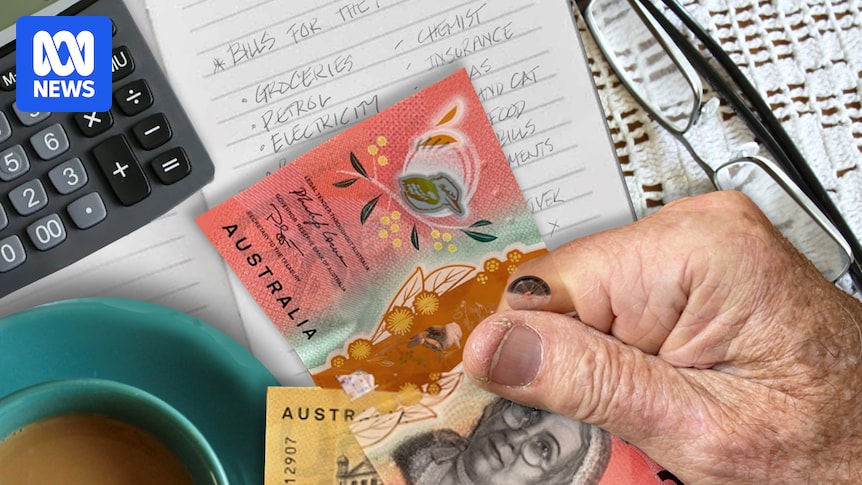Inflation eased further in the June quarter, with consumer prices rising at an annual pace of 2.1 per cent, down from 2.4 per cent in the March quarter.
The “trimmed mean” measure of inflation, which is the Reserve Bank’s preferred measure of underlying inflation, also declined.
It fell from 2.9 to 2.7 per cent between March and June, which broadly matches the Reserve Bank’s forecasts from May.
RBA defies expectations of interest rate cut
The RBA’s official forecasts had trimmed mean inflation slipping to 2.6 per cent by this stage, and for headline inflation to be 2.1 per cent.
Westpac’s chief economist Luci Ellis said today’s data confirmed inflation was under control and the RBA was now likely to cut interest rates at its August meeting.
“Further cuts in November, February 2026 and May 2026 also look increasingly likely,” Ms Ellis said.
In the RBA board’s recent rates meeting, a majority of its members voted to keep interest rates on hold this month rather than to cut rates, saying they wanted to wait for more information to confirm that inflation was under control.
But a week later, new data showed the national unemployment rate had picked up from 4.1 to 4.3 per cent in June, to a three-year high.
RBA governor Michele Bullock later downplayed that rise in unemployment, saying it was not higher than the RBA had been forecasting, and the RBA was still concerned about getting inflation down.
RBA says unemployment jump not a shock
But Ms Ellis said this June quarter inflation data gave the RBA the room it needed to cut rates again.
“Today’s data removes any awkwardness posed by inflation remaining too high for the RBA’s comfort, at the same time that the labour market might be starting to ease again,” Ms Ellis said.
“Further softening in the labour market would sit uncomfortably with a decision to hold the cash rate at restrictive levels when underlying inflation is so close to target.”
‘Near enough is good enough’ for a rate cut
David Bassanese, BetaShares chief economist, said the decline in trimmed mean inflation reflected broad-based easing in goods, services, and housing-related inflation.
“Although this is a touch higher than the Reserve Bank’s May forecast of 2.6 per cent, my view is ‘near enough is good enough’ and an August rate cut now seems a done deal,” he said.
But he said the data also demonstrated that RBA governor Bullock was right to be cautious about cutting rates before she saw this inflation data.
Earlier this month, Ms Bullock had raised concerns about the reliability of the ABS’s separate Monthly Inflation Indicator data, which suggested that inflation was much weaker than today’s figures showed.
“It turns out the governor was right to be cautious,” Mr Bassanese said.
“Until the methodology used in the monthly CPI reports is improved, this highlights the importance of focusing on the quarterly CPI results when making interest rate policy decisions.”
Why did prices rise more slowly?
The ABS says the main contributor to the slowdown in the pace of annual headline inflation was a large fall in automotive fuel prices.
Fuel prices were 10 per cent lower in the June quarter of 2025 compared to a year ago.
The average cost of unleaded petrol for the June 2025 quarter was $1.77 per litre, which was 21 cents per litre lower than in the June 2024 quarter.
The ABS says annual price rises for insurance (+3.9 per cent), rents (+4.5 per cent) and new dwellings (+0.7 per cent) also continued to slow in the June quarter.
Annual inflation for food and non-alcoholic beverages has also remained around 3 per cent for the past five quarters.
Fruit and vegetable prices rose 4.6 per cent in the 12 months to the June quarter, down from 6.6 per cent to the March quarter.
The prices for “non-discretionary” goods and services had a quarterly rise of 0.7 per cent, and an annual rise of 1.8 per cent.
The rise in the June quarter was driven by fruit and vegetables (+4.3 per cent), electricity (+8.1 per cent), rents (+1 per cent) and medical and hospital services (+2.3 per cent). The quarterly rise was partially offset by automotive fuel (-3.4 per cent).
The prices for “discretionary goods” and services had a quarterly rise of 0.7 per cent and an annual rise of 2.4 per cent.
The rise in the June quarter was driven by international holiday travel and accommodation (+4.7 per cent), garments (+3.5 per cent) and furniture (+2.9 per cent).
